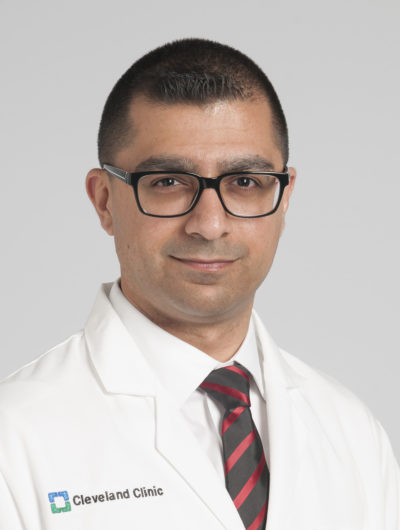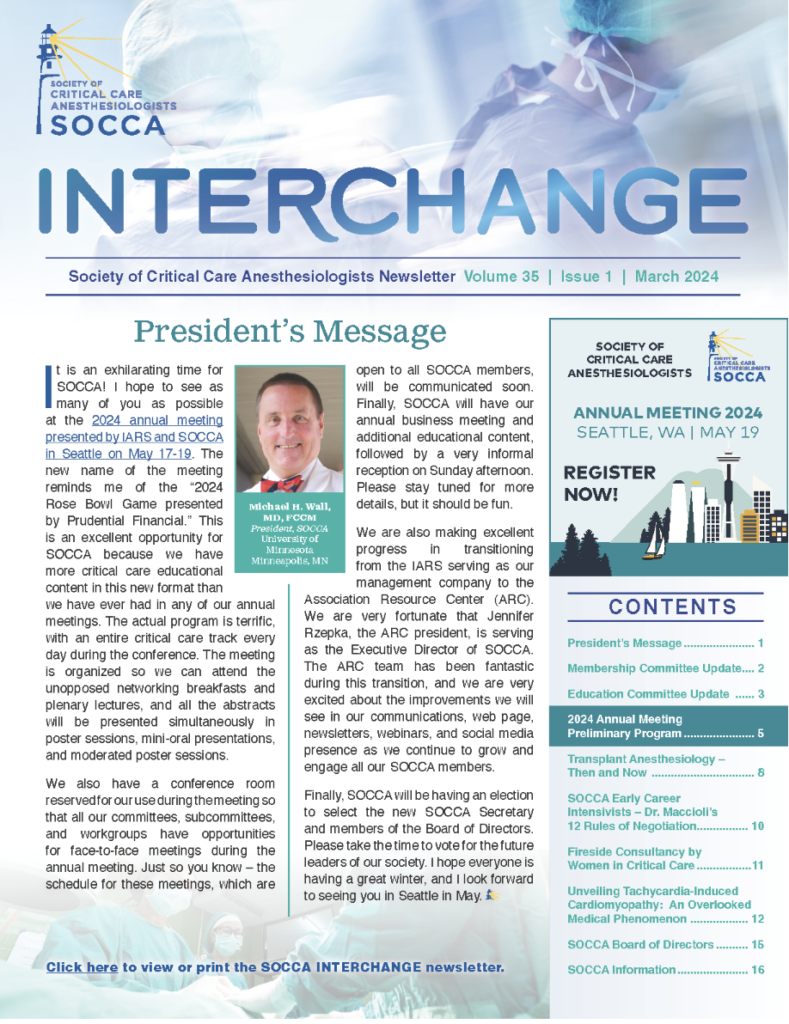Prediction of Patient Deterioration on the General Care Floor and its Implications for Critical Care – A Special Series on Perioperative Patient Safety
Editor’s Note
This four-part special series on perioperative patient safety will try to answer several questions related to patient deterioration on the general care floor and its implications for the critical care anesthesiologist and the perioperative physician, both of whom also extend services as rapid response providers on the general care floor. Areas of focus will include the demographic of patient deterioration on the hospital ward, the role of continuous monitoring as a tool to prevent harm, the operations and implementation of an effective continuous monitoring system and methods to allay alarm fatigue, along with the role of a rapid response team and early warning scores that rely on real time patient data to function as effective guardians for our patients on the general care floor.
While anesthesia-related intraoperative mortality is rare, all-cause postoperative mortality, defined as death within the first 30 days of surgery, remains common. Overall, 30-day postoperative morality occurs in approximately 1-2% of all patients—approximately 1,000 times more frequently than anesthesia-related intraoperative mortality.1,2,3 While the general care ward or unit is traditionally the site for the care of ‘clinically stable’ patients, nearly half of all adverse events in hospitalized postoperative patients occur on the general care ward and almost three-quarters of patients who suffer postoperative mortality are never even admitted to an intensive care unit.4,5,6 When acute cardiorespiratory compromise events occur in hospitalized patients on the general care ward, they are almost always associated with poor outcomes. Furthermore, acute respiratory events on inpatient wards have been associated with an in-hospital mortality rate of approximately 40%.7,8,9 As Critical Care Anethesiologists, we are frequently on the front line of these issues and are faced with an increasing number of rapid response calls and the downstream consequences of all these acute events on the general care floor.
Current ward monitoring protocols, relying predominantly on vital signs that provide limited “snap-shots of time” assessments leave our patients dangerously under monitored.10 Many overnight ICU admission may be related to the lack of timely intervention in the setting of undetected vital signs pattern changes in these patients. An observational cohort study of non-cardiac surgical patients showed that severe prolonged hypoxemia (SpO2 <90% for an hour or more) was missed approximately 90% of the time by routine vital sign monitoring alone.11 Nearly all patients after major abdominal cancer surgery had hypoxemia detected by continuous monitoring while their standard vital sign assessments by nurses (linked to an early warning score algorithm) detected a SpO2 <92% in less than 20% of the patients.12
The heart-lung apparatus functions in close coordination and it would be unrealistic to separate hypotension from respiratory compromise. Postoperative hypotension (mean arterial pressure <65 mmHg) occurred for at least a continuous 15 minutes in about one fifth of non-cardiac surgery patients, and for at least a continuous 30 minutes (mean arterial pressure <70 mmHg) in another quarter. Similar to desaturation episodes, these hypotension episodes were detected by continuous monitoring less than half of the time using traditional monitoring.13
In addition, a conundrum of associated patient and clinical care related factors add to the increasing risk of acute life-threatening events during the postoperative recovery period. A key factor is the use of opioid-based pain medication, either alone or in combination with benzodiazepine-based sedation, or other mood-altering medications that tend to be co-prescribed in many hospitalized patients. The use of opioids and sedatives in combination nearly triples the risk of receiving cardiopulmonary resuscitation as an inpatient compared to use of either opioids or sedatives as singular agents.14 That a lot of these patients also suffer from undiagnosed obstructive sleep apnea, adds to the associated risk of cardiac events.15 A closed claims analysis saw that opioid induced respiratory depression, was associated with anoxic brain injury and mortality in a significant number of patients. Most of these events occurred within 2 hours of the last nursing check and, potentially, could have been prevented by better continuous monitoring and education.16
How do we, then, make the General Care Ward safer for postoperative patient? It may seem a simple answer. Add continuous monitoring of every single patient. Practically, this would mean adding a multi parameter vital sign monitor to every patient room, tethering the patient to this and having a bedside nurse respond to every real and false alarm (which there would be many more false alarms than real ones). This clearly is an undesirable outcome – and one which would never make a difference in patient safety. Therefore, risk stratification scores such as that developed by large observational, internally validated continuous monitoring datasets such as the one generated by the PRODIGY trial, will serve to help allow the bedside healthcare provider triage and reallocate resources and proactive continuous monitoring in those at a higher risk.17,18 In this context, the PRODIGY risk score is a novel, easy to use bedside risk scoring system, generated by continuous oximetry and capnography data, derived from background blinded (silenced) monitoring of patients receiving parenteral opioids on the general care floor. One key element of this trial was to generate many thousands of hours of waveform data, that would allow us to perform artificial intelligence-based pattern detection analytics to predict harm for our monitored floor patients. The incorporation of natural language processing to pick up vital information from clinical notes and laboratory and imaging studies will further impower this tool and allow for a safer recovery environment for our patients on the general care floor.
References
- Fecho K, Lunney AT, Boysen PG, Rock P, Norfleet EA. Postoperative mortality after inpatient surgery: Incidence and risk factors. Ther Clin Risk Manag. 2008;4(4):681-8.
- Semel ME, Lipsitz SR, Funk LM, Bader AM, Weiser TG, Gawande AA. Rates and patterns of death after surgery in the United States, 1996 and 2006. Surgery. 2012;151(2):171-82.
- Smilowitz NR, Gupta N, Ramakrishna H, Guo Y, Berger JS, Bangalore S. Perioperative Major Adverse Cardiovascular and Cerebrovascular Events Associated With Noncardiac Surgery. JAMA Cardiol. 2017;2(2):181-7.
- de Vries EN, Ramrattan MA, Smorenburg SM, Gouma DJ, Boermeester MA. The incidence and nature of in-hospital adverse events: a systematic review. Quality & safety in health care. 2008;17(3):216-23.
- Li G, Warner M, Lang BH, Huang L, Sun LS. Epidemiology of anesthesia-related mortality in the United States, 1999-2005. Anesthesiology. 2009;110(4):759-65.
- Pearse RM, Moreno RP, Bauer P, Pelosi P, Metnitz P, Spies C, et al. Mortality after surgery in Europe: a 7 day cohort study. Lancet. 2012;380(9847):1059-65.
- Perman SM, Stanton E, Soar J, Berg RA, Donnino MW, Mikkelsen ME, et al. Location of In-Hospital Cardiac Arrest in the United States-Variability in Event Rate and Outcomes. J Am Heart Assoc. 2016;5(10).
- Morrison LJ, Neumar RW, Zimmerman JL, Link MS, Newby LK, McMullan PW, Jr., et al. Strategies for improving survival after in-hospital cardiac arrest in the United States: 2013 consensus recommendations: a consensus statement from the American Heart Association. Circulation. 2013;127(14):1538-63.
- Andersen LW, Berg KM, Chase M, Cocchi MN, Massaro J, Donnino MW, et al. Acute respiratory compromise on inpatient wards in the United States: Incidence, outcomes, and factors associated with in-hospital mortality. Resuscitation. 2016;105:123-9.
- Leuvan CH, Mitchell I. Missed opportunities? An observational study of vital sign measurements. Critical care and resuscitation : journal of the Australasian Academy of Critical Care Medicine. 2008;10(2):111-15.
- Sun Z, Sessler DI, Dalton JE, Devereaux PJ, Shahinyan A, Naylor AJ, et al. Postoperative Hypoxemia Is Common and Persistent: A Prospective Blinded Observational Study. Anesthesia and analgesia. 2015;121(3):709-15.
- Duus CL, Aasvang EK, Olsen RM, Sorensen HBD, Jorgensen LN, Achiam MP, et al. Continuous vital sign monitoring after major abdominal surgery-Quantification of micro events. Acta anaesthesiologica Scandinavica. 2018;62(9):1200-8.
- Turan A, Chang C, Cohen B, Saasouh W, Essber H, Yang D, et al. Incidence, Severity, and Detection of Blood Pressure Perturbations after Abdominal Surgery: A Prospective Blinded Observational Study. Anesthesiology. 2019;130(4):550-9.
- Overdyk FJ, Dowling O, Marino J, Qiu J, Chien HL, Erslon M, et al. Association of Opioids and Sedatives with Increased Risk of In-Hospital Cardiopulmonary Arrest from an Administrative Database. PLoS One. 2016;11(2):e0150214.
- Chan MTV, Wang CY, Seet E, Tam S, Lai HY, Chew EFF, et al. Association of Unrecognized Obstructive Sleep Apnea With Postoperative Cardiovascular Events in Patients Undergoing Major Noncardiac Surgery. JAMA. 2019;321(18):1788-98.
- Lee LA, Caplan RA, Stephens LS, Posner KL, Terman GW, Voepel-Lewis T, et al. Postoperative opioid-induced respiratory depression: a closed claims analysis. Anesthesiology. 2015;122(3):659-65.
- Khanna A, Buhre W, Saager L, Stefano PD, Weingarten T, Dahan A, et al. 36: DERIVATION AND VALIDATION OF A NOVEL OPIOID-INDUCED RESPIRATORY DEPRESSION RISK PREDICTION TOOL. Critical Care Medicine. 2019;47(1):18.
- Khanna AK, Overdyk FJ, Greening C, Di Stefano P, Buhre WF. Respiratory depression in low acuity hospital settings-Seeking answers from the PRODIGY trial. J Crit Care. 2018;47:80-7.




































